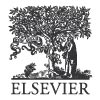مدل مبتنی بر تکنولوژی گروهی و الگوریتم بهینه سازی کوکو (فاخته) برای تخصیص منابع در رایانش ابری
Fast and accurate link prediction in social networking systems
مشخصات کلی
| سال انتشار | 2012 |
| کد مقاله | 4465 |
| فرمت فایل ترجمه | Word |
| تعداد صفحات ترجمه | 17 |
| نام مجله | The Journal of Systems and Software |
| نشریه | ScienceDirect |
| درج جداول و شکل ها در ترجمه | انجام شده است |
| جداول داخل مقاله | ترجمه شده است |
چکیده فارسی
کنترل هزینه های عملیاتی یکی از اهداف اصلی مسئله مدیریت منابع در رایانش ابری (CC) است. این مقاله یک مدل ریاضی جدید مبتنی بر تکنولوژِی گروهی (GT) برای نقشه برداری ماشین های مجازی (VMها) برای جریان کار به منظور کنترل برخی هزینه ها (برای مثال هزینه های انتقال، هزینه های جریمه، هزینه سرور)نشان می دهد هنگامی که VM ها در حال اجرا هستند. GT یک تکنولوژی ساخت خوش نام در محیط های صنعتی است که می تواند برخی معیارها را کنترل کند (برای مثال حرکات جزئی، بکارگیری منابع). در مسائل سایز برزگتر یک الگوریتم بهینه سازی کوکو (COA) مطرح شده است. برای تست تاثیر روش مان، در ابتدا یک مجموعه از مسائل را به صورت تصادفی تولید کردیم و سپس مدل را مقایسه کردیم و COA با یک الگوریتم خوشنام در ادبیات نوبت گردشی (RR) نامیده می شود. آنالیز کردن نتایج محاسباتی ثابت می کند که روشهای ما عملکرد بهتری از RR دارند.
چکیده لاتین
Online social networks (OSNs) recommend new friends to registered users based on local-based features of the graph (i.e. based on the number of common friends that two users share). However, OSNs do not exploit all different length paths of the network. Instead, they consider only pathways of maximum length 2 between a user and his candidate friends. On the other hand, there are global-based approaches, which detect the overall path structure in a network, being computationally prohibitive for huge-sized social networks. In this paper we provide friend recommendations, also known as the link prediction problem, by traversing all paths of a limited length, based on the “algorithmic small world hypothesis”. As a result, we are able to provide more accurate and faster friend recommendations. We also derive variants of our method that apply to different types of networks (directed/undirected and signed/unsigned). We perform an extensive experimental comparison of the proposed method against existing link prediction algorithms, using synthetic and three real data sets (Epinions, Facebook and Hi5). We also show that a significant accuracy improvement can be gained by using information about both positive and negative edges. Finally, we discuss extensively various experimental considerations, such as a possible MapReduce implementation of FriendLink algorithm to achieve scalability.
خرید و دانلود ترجمه این مقاله:
جهت خرید این مقاله ابتدا روی لینک زیر کلیک کنید، به صفحه ای وارد می شوید که باید نام و ایمیل خود را وارد کنید و پس از آن روی دکمه خرید و پرداخت کلیک نمایید، پس از پرداخت بلافاصله به سایت بازگشته و می توانید فایل خود را دانلود کنید، همچنین لینک دانلود به ایمیل شما نیز ارسال خواهد شد.
هیچ دیدگاهی برای این مقاله ثبت نشده است

















دیدگاه ها